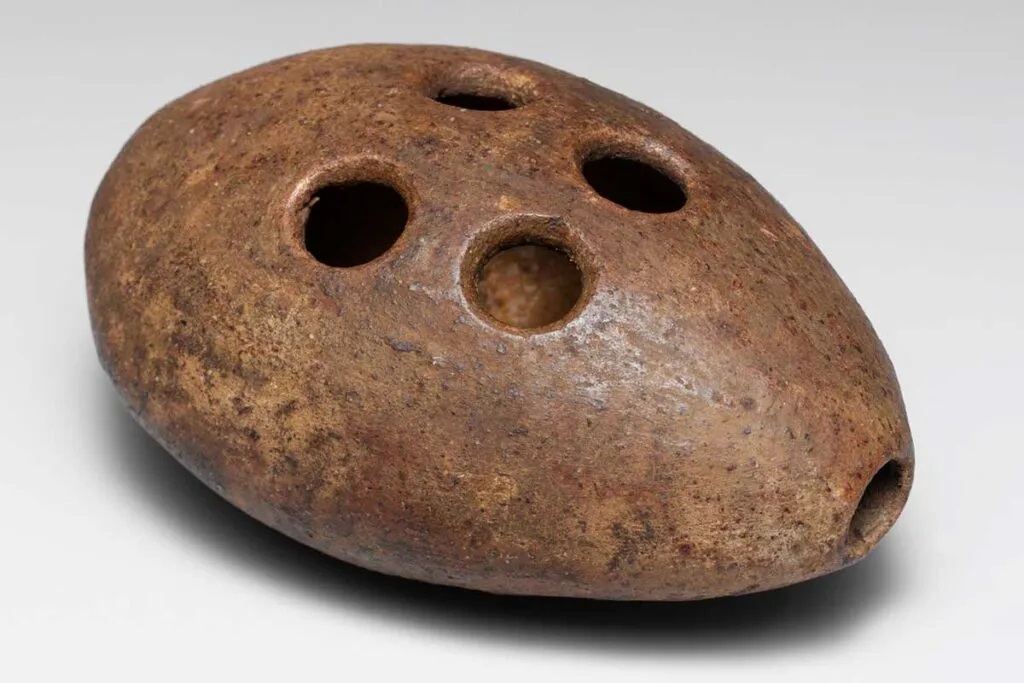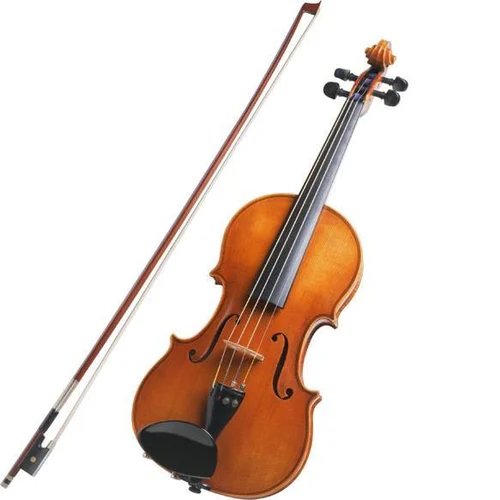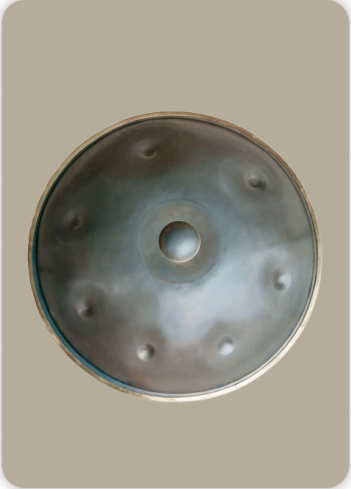Violetta
Bowed Instruments
Europe
Between 1001 and 1900 AD
The Violetta is a lesser-known bowed string instrument that shares similarities with the violin, viola, and other members of the violin family. It has a delicate and resonant tone, often described as being between the brightness of a violin and the depth of a viola. The instrument is generally smaller than a viola but slightly larger than a violin, offering a unique timbre that makes it distinct within the bowed string family. The Violetta has been used in various musical settings, including chamber music, folk traditions, and orchestral arrangements, though its presence has remained somewhat niche compared to the more widely recognized violin or viola.
Type of Instrument
The Violetta belongs to the family of bowed string instruments. It is played using a bow and typically features four strings tuned in intervals similar to the violin or viola. As a member of the chordophone category, the sound is produced by drawing a bow across the strings, causing them to vibrate and resonate through the instrument’s hollow wooden body. It is classified as an orchestral and folk instrument, with some variations in design and playing techniques depending on the region where it is used.
History
The origins of the Violetta can be traced back to the European continent, particularly in the 16th and 17th centuries. During this time, many string instruments were being developed and refined, leading to the evolution of the violin family. The Violetta emerged as an intermediary instrument between the violin and the viola, fulfilling a need for a slightly different tonal range within ensembles. Some historical records suggest that the Violetta was used in Renaissance and Baroque music, primarily in Italy, Germany, and France. However, due to its similarity to the violin and viola, it did not achieve the same widespread adoption and eventually became a rarer instrument in later centuries.
Types of Violetta
The Violetta has undergone several variations over the years, leading to different types based on size, tuning, and intended use. Some notable variations include:
Baroque Violetta: A historical version used in Baroque music, often featuring gut strings and a flatter bridge for easier chord playing.
Modern Violetta: A contemporary adaptation with synthetic strings and a more pronounced arch in the bridge, allowing for better articulation.
Electric Violetta: A newer variant that incorporates electronic pickups for amplification, used in modern experimental and fusion music.
Folk Violetta: A version used in regional folk traditions, sometimes with modifications in tuning or body shape to suit local playing styles.
The Violetta is traditionally crafted from high-quality tonewoods, similar to the violin and viola. The top plate is commonly made of spruce, a material known for its excellent resonance and ability to produce a warm sound. The back, sides, and neck are typically made from maple, which provides structural strength and enhances the tonal quality of the instrument. The fingerboard, pegs, and tailpiece are often made from ebony or other dense hardwoods. The strings were historically made of gut, but modern versions often feature synthetic or metal-wound strings for better durability and projection.
Characteristics
The Violetta is a rare and lesser-known string instrument, typically considered a smaller variant of the viola or a hybrid between the violin and viola. It shares similarities in shape and construction with both instruments but is distinguished by its slightly reduced size and unique tonal qualities. The Violetta produces a warm, mellow sound with a more delicate resonance than a full-sized viola, making it suitable for chamber music and solo performances. It is played with a bow, like other bowed string instruments, and is tuned similarly to a viola but may have slight variations depending on the maker or player preference.
The craftsmanship of a Violetta often incorporates fine wood materials such as spruce for the top and maple for the back, enhancing its acoustic properties. While it is not commonly used in mainstream orchestras, the instrument is occasionally found in historical performances and specialized ensembles seeking a distinct tonal character.
Sound Production
Sound is produced on the Violetta through the vibration of its strings, which are set into motion by the friction of a bow drawn across them. The bow, traditionally strung with horsehair, creates the necessary friction to excite the strings, producing sound waves that resonate through the hollow wooden body. The shape of the instrument, along with the f-holes carved into the top plate, helps amplify and project the sound. Factors such as bowing pressure, speed, and the point of contact influence the dynamics, articulation, and tonal color of the instrument.
Playing Methods
The Violetta is played using a variety of bowing and fingering techniques, depending on the musical style and tradition:
Arco Playing: The primary method, where the bow is used to draw sound from the strings.
Pizzicato: Plucking the strings with fingers for a percussive and bright sound.
Double Stops: Playing two strings simultaneously to create harmonies.
Vibrato: A slight oscillation of pitch achieved by rocking the finger back and forth on a string.
Harmonics: Producing ethereal, flute-like tones by lightly touching specific points on the string.
Col Legno: Using the wooden part of the bow to strike the strings, creating a percussive effect.
Roles in Music
The Violetta is a rare and lesser-known string instrument, often considered a small viola or a transitional instrument between the violin and viola. In musical compositions, the violetta plays a versatile role, depending on the ensemble and genre. In orchestras and chamber music, it provides a rich, warm mid-range tone that blends well with violins and cellos, often reinforcing harmonic textures and adding depth to the overall sound. It can serve both as a melodic and harmonic instrument, capable of carrying expressive solos while also supporting harmonies.
In historical and Baroque music, the violetta was sometimes used as a continuo instrument, adding subtle harmonic support to the basso section. Additionally, in folk and traditional music, the violetta might be used for ornamented melodies and rhythmic accompaniment. While not as commonly featured in modern orchestration, its unique timbre and adaptability make it a valuable addition to specialized ensembles and historical performances.
Cultural Significance
Though not as widely known as other string instruments, the Violetta holds cultural importance in specific regions and historical contexts. During the Renaissance and Baroque periods, it was valued for its role in small ensembles and court music. In folk traditions, it has been adapted to suit local musical styles, making it a part of cultural heritage in some areas. In modern times, its revival by certain musicians and luthiers has sparked renewed interest, particularly in historically informed performances and contemporary experimentation.
The Violetta, with its unique tonal qualities and historical background, remains a fascinating instrument that bridges the gap between the violin and viola. While it may not be as mainstream as other bowed string instruments, its presence in various musical traditions and its potential for expressive performance continue to make it a valuable part of the musical landscape.
FAQ
What is the origin of the Violetta musical instrument?
The Violetta is a historical bowed string instrument, closely related to the violin family. It originated in Europe during the Renaissance period and was primarily used in chamber music. This instrument was a predecessor to the modern viola and featured a slightly smaller body. Its warm and expressive tone made it popular in early ensemble settings.
What is the historical significance of the Violetta?
The Violetta played a crucial role in the evolution of string instruments, bridging the gap between medieval fiddles and classical violas. It was favored by composers and musicians for its rich tonal qualities and versatility. Over time, its design was refined, contributing to the development of the modern viola and violin family. Today, it is mostly found in historical music performances.
What kind of sound does the Violetta produce?
The Violetta produces a warm, mellow, and resonant sound with a slightly softer timbre than the modern viola. Its gut strings and wooden body contribute to a rich, expressive tone suitable for melodic passages. The instrument’s dynamic range allows for both subtle and powerful expressions, making it ideal for early chamber and ensemble music.
 Links
Links
References
Other Instrument
Categories


















